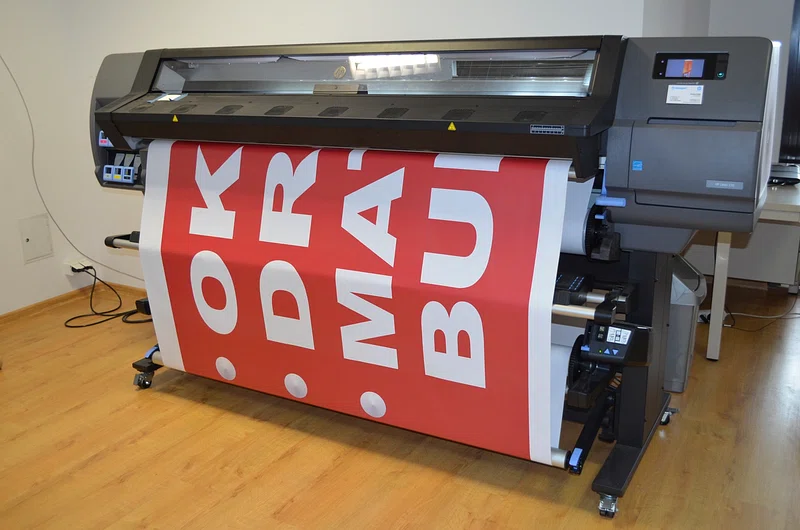Comprehending Just How Digital Printing Transforms the Printing Market
The printing industry, long soaked in typical techniques, is undertaking a radical makeover with the development of digital printing. This ingenious modern technology, which avoids the demand for printing plates, makes it possible for quick manufacturing and modification, reshaping the landscape of print communication. With its prospective to spur interaction through customized web content and to offer sustainable solutions, it's clear that electronic printing is more than a technological advancement; it's a critical game changer. Exactly how specifically does it revolutionize the sector? Let's check out.
The Advancement of Digital Printing: A Quick Introduction
Considering that its creation, digital printing has undergone substantial makeovers, consistently reinventing the printing market. Its evolution started with the growth of xerography in the mid-20th century, a procedure which prepared for laser printers. With the arrival of the 90s, electronic printing innovation began to grow, and the sector observed the introduction of direct imaging presses, which eliminated the demand for printing plates. As the new millennium unfolded, advancements in technology even more stimulated the development of electronic printing, bring about the production of high-speed inkjet printers. These tools supplied remarkable high quality and speed, forever changing the landscape of the industry. Today, digital printing stands as a testament to human advancement, constantly evolving to fulfill the ever-changing demands of the contemporary world.

Unloading the Innovation Behind Digital Printing
Exploring the intricacies of electronic printing technology, one experiences an abundant tapestry of advanced equipment and complex formulas. At the heart of this process exists a digital photo, which is processed by software that splits it into a grid of dots. These dots are then transformed into an electronic code. This code is translated by the printer, which uses it to exactly transfer droplets of ink onto the substratum. The droplets are so tiny and accurate that they develop an image that is essentially indistinguishable from the initial. This intricate system, boosted by advanced software application and high-resolution imaging, has actually transformed the landscape of the printing sector, paving the method for unprecedented degrees of detail and accuracy.

The Benefits of Digital Printing for Services
Understanding the modern technology behind digital printing provides a clear image of its precision and information. For businesses, this equates into countless advantages. To start with, digital printing offers extraordinary rate, allowing companies to satisfy limited due dates without endangering on high quality. Next, it minimizes prices as there are no plates or physical setup, making it best for small-volume printing jobs. Furthermore, this innovation uses superior consistency with each print output, getting rid official website of variants often seen in conventional techniques. Finally, electronic printing is eco-friendly, making use of much less ink and producing less waste. The full potential of digital printing is understood when made use of for modification and customization, a topic that will be covered in depth in the following area.
The Duty of Digital Printing in Customization and Personalization
While conventional printing approaches have problem with customization and personalization, digital printing succeeds in these areas. It allows for the very easy modification of designs, without the demand for costly and time-consuming plate adjustments (print on demand). This allows businesses to customize products to specific clients, meeting certain needs and boosting client complete satisfaction
Digital printing likewise enables variable data printing, where components such as text, graphics, and pictures might be changed from one printed item to the next, without reducing the printing procedure. This is particularly helpful for straight marketing projects, where tailored messaging can considerably enhance feedback rates. In this method, electronic printing not only transforms the printing market yet also changes the means companies interact with their consumers.
Analysing the Environmental Impact of Digital Printing
Although electronic printing has actually been admired for its duty in customization and personalization, it is critical to examine its environmental impact. Digital printing can be less wasteful than standard techniques, due to the fact that it operates a 'print as needed' basis, removing the need Get the facts for large print runs that can result in excess and waste. In addition, it uses fewer chemicals and produces less volatile organic compounds (VOCs) contrasted to counter printing. However, the power usage of digital printers can be high, resulting in increased carbon footprint. The use of non-recyclable printing components and the obstacle of e-waste monitoring present considerable environmental concerns. While electronic printing has lots of advantages, its ecological effect should anonymous be diligently handled.
Verdict
In verdict, digital printing has changed the printing sector, offering quick, cost-effective, and high-quality options - print on demand. Recognizing these changes is vital for businesses to take advantage of the advantages of digital printing effectively.
Comments on “Discover the benefits and challenges of launching a print on demand shop on the web.”